For more than a decade, the West Nile virus (WN virus or WNV) has made America its new home, infecting a multitude of unsuspecting individuals each year. With more than 1,000 documented cases and dozens of deaths reported so far this summer, Americans may be experiencing the largest outbreak of WNV since its first major emergence onto U.S. soil. (See the CDC report here.)
Due to this sudden increase in reported infections, major media outlets have been quick to broadcast stories covering this seasonal epidemic, but are lax on explaining how the virus actually works.
So in the midst of what is quite possibly the biggest U.S. outbreak of the WNV, let's take time to break the virus down in order to get a better understanding of this nasty infection.
The Where and What
Although it has been more than half of a century since WNV was first isolated from humans (in, yes, the West Nile province of Uganda,) it emerged from the murkiness of arbitrary infectious disease when it made a big landing onto American territory in 1999. There, the virus was reported to cause 59 cases of encephalitis (brain swelling and inflammation) and seven deaths in the state of New York alone.
Interestingly, while WNV is one of the most extensively distributed viruses of its kind, the intial spread of WNV to the U.S. is thought to be directly introduced from Israel. (For more on this, see here.) Now that the virus has been detected in 48 continental states, D.C. and Puerto Rico, the Centers for Disease Control and Prevention (CDC) has created the ArboNET national surveillance system that has tracked the U.S. spread of WNV since its implementation back in 2000.
Why the name ArboNET and not NileNET? The reader might ask. WNV is classified under the "Arbovirus" group of viruses that cause a variety of infections, including the familiar-sounding Dengue Fever and Yellow Fever.
The commonality of this batch of viruses is not in the type of disease that they cause but rather how the disease is transmitted. Arboviruses, including WNV, are all spread in part by arthropods, or inverterbrate animals containing exoskeletons. The acronymic name says it all (Arbovirus = ARthropod-BOrne viruses).
Hence, ArboNET.
In the case of WNV, the arthropod of choice is the common mosquito (specifically of the genus culex). As we shall see, it is the relationship between the virus and this annoying pest that makes humans prime victims for WNV infection. Which brings us to the how.
The How
Besides the few unfortunate cases of blood and organ donor transmission of WNV, nearly all human infection of WNV is from mosquito bites. We humans and other innocent mammalian bystanders have the untoward position of being the incidental victims of a multi-animal viral host cycle that also includes a variety of bird and mosquito species. A bird in this cycle acts as the "amplifying host," or the place where WNV can comfortably replicate, while the mosquito acts as the "vector," or the agent that carries the virus from one host to another.
As the infected mosquito vamps out on human blood, it can inject WNV-crammed saliva through the skin, directly inoculating humans with enough of the virus to potentially cause a full-blown infection.
According to a serologic survey published in Lancet a few years after the 1999 outbreak, major illness from WNV infection actually occurs in fewer than 1 percent of all infected individuals (see here for the full study). In fact, most individuals infected with the WNV are asymptomatic and clear the virus from their bloodstreams without being aware of it.
If this is the case, why is WNV getting such major airplay from the big news networks?
The Why
The reason is simple: The relatively high incidence of WNV infection, even the setting of such a low percentage of complicated cases, is enough to be a real threat to many high-risk communities. Furthermore, there is a spectrum of disease states that can occur once an individual is infected with WNV. Thus, one may survive an infection from WNV but may also be left with severe, live-changing complications.
It is true that the majority of persons infected with WNV are left unscathed or with a nonspecific fever; however, some individuals, especially those in high-risk demographics such as the elderly or those with immune system issues, can develop meningitis (inflammation of the membranes of the central nervous system), encephalitis, or even paralysis.
Unfortunately, there is no specific treatment available and care is often supportive. So when should we treat?
The When
Although certain medications are showing promise in animal studies, there is no standard of care drug that has been clearly demonstrated to benefit infected humans. Therefore, management of a WNV outbreak should be based on prevention.
Personal protective measures from potentially WNV-infected mosquitoes such as using insect repellent, wearing long pants and sleeves and repairing screens on windows and doors are a good start. Eradicating mosquito breeding sites such as draining standing water in your awe-inspiring outdoor pool can be helpful (although detrimental to your summer plans).
WNV vaccines are currently unavailable but are being studied through multiple trials and will hopefully be approved within the next few years.
Take-Home Point
The West Nile virus has quickly become a hot topic this summer in the U.S. for good reason: Americans may be experiencing the biggest summer outbreak of WNV since its arrival, and many recent deaths and health complications have been directly attributed to the virus.
So until the more effective treatment becomes available to fight WNV, the next time you decide to head outside to enjoy a nice summer day, remember to protect yourself not only from the sun, but also from the pesky mosquito.
For more by Brian Secemsky, M.D., click here.
For more healthy living health news, click here.